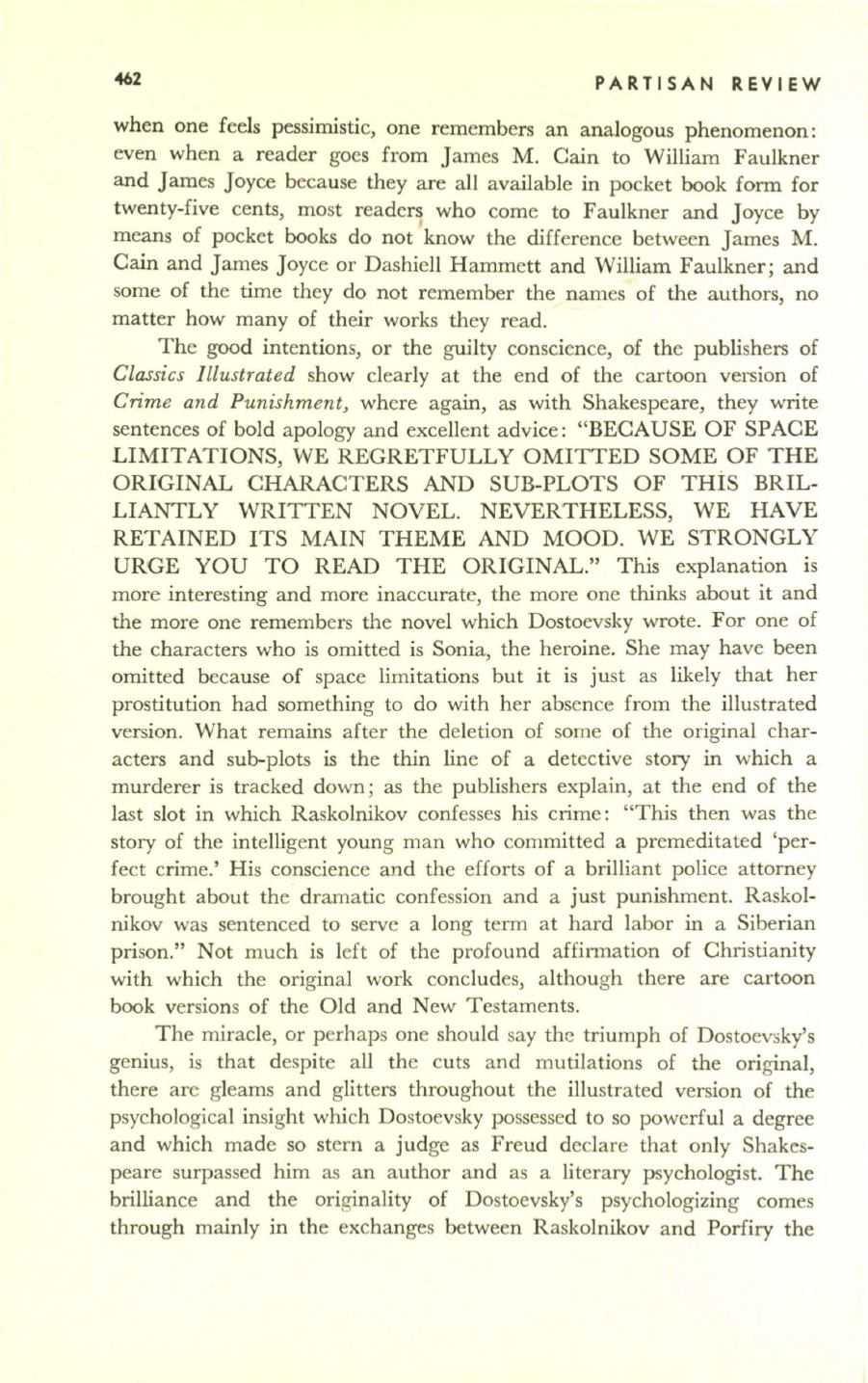
<462
PARTISAN REVIEW
when one feels pessimistic, one remembers an analogous phenomenon:
even when a reader goes from James M. Cain to William Faulkner
and James Joyce because they are all available in pocket book form for
twenty-five cents, most readers who come to Faulkner and Joyce by
means of pocket books do not know the difference between James M.
Cain and James Joyce or Dashiell Hammett and William Faulkner; and
some of the time they do not remember the names of the authors, no
matter how many of their works they read.
The good intentions, or the guilty conscience, of the publishers of
Classics Illustrated
show clearly at the end of the cartoon version of
Crime and Punishment,
where again, as with Shakespeare, they write
sentences of bold apology and excellent advice: "BECAUSE OF SPACE
LIMITATIONS, WE REGRETFULLY OMITTED SOME OF THE
ORIGINAL CHARACTERS AND SUB-PLOTS OF THis BRIL–
LIANTLY WRITTEN NOVEL. NEVERTHELESS, WE HAVE
RETAINED ITS MAIN THEME AND MOOD. WE STRONGLY
URGE YOU TO READ THE ORIGINAL." This explanation is
more interesting and more inaccurate, the more one thinks about it and
the more one remembers the novel which Dostoevsky wrote. For one of
the characters who is omitted is Sonia, the heroine. She may have been
omitted because of space limitations but it is just as likely that her
prostitution had something to do with her absence from the illustrated
version. What remains after the deletion of some of the original char–
acters and sub-plots is the thin line of a detective story in which a
murderer is tracked down; as the publishers explain, at the end of the
last slot in which Raskolnikov confesses his crime: "This then was the
story of the intelligent young man who committed a premeditated 'per–
fect crime.' His conscience and the efforts of a brilliant police attorney
brought about the dramatic confession and a just punishment. Raskol–
nikov was sentenced to serve a long term at hard labor in a Siberian
prison." Not much is left of the profound affirmation of Christianity
with which the original work concludes, although there are cartoon
book versions of the Old and New Testaments.
The miracle, or perhaps one should say the triumph of Dostoevsky's
genius, is that despite all the cuts and mutilations of the original,
there are gleams and glitters throughout the illustrated version of the
psychological insight which Dostoevsky possessed to so powerful a degree
and which made so stern a judge as Freud declare that only Shakes–
peare surpassed him as an author and as a literary psychologist. The
brilliance and the originality of Dostoevsky's psychologizing comes
through mainly in the exchanges between Raskolnikov and Porfiry the


